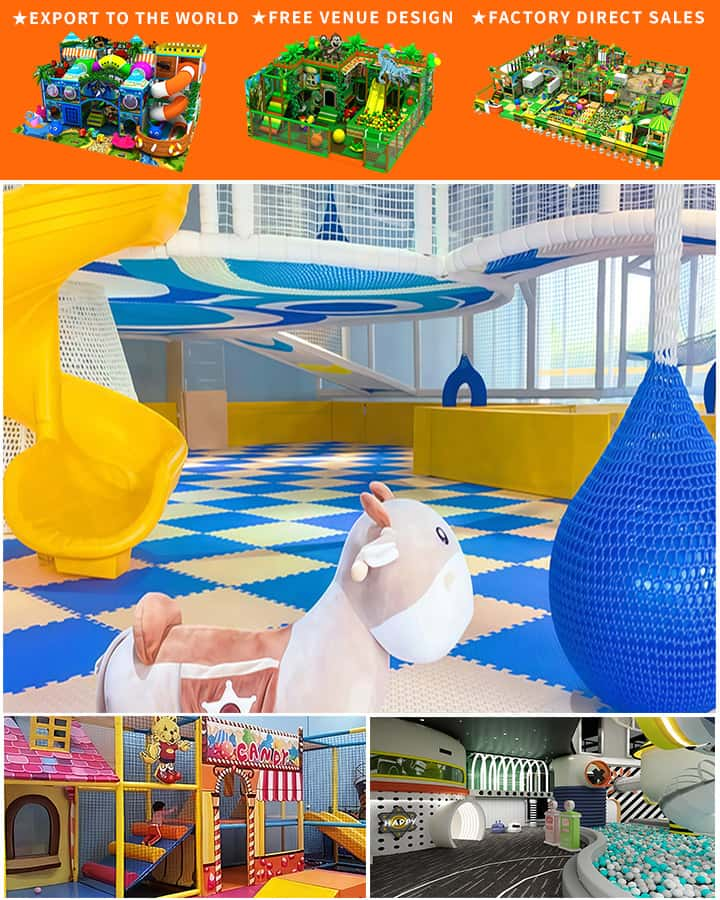Preschool years are crucial for early childhood development, and indoor play equipment plays a significant role in this phase. Selecting the right indoor play equipment can create an engaging environment that promotes physical activity, social skills, and cognitive development. Here is a guide on how to choose the best indoor play equipment for preschoolers.
Importance of Indoor Play Equipment
Indoor play equipment offers numerous benefits for preschool children. It provides opportunities for physical exercise, helping kids develop motor skills and strength. Additionally, playing with others fosters social interactions and helps children learn essential skills such as sharing, cooperation, and empathy. Moreover, well-designed play equipment stimulates imagination and creativity, contributing to cognitive growth.
Key Considerations When Choosing Indoor Play Equipment
Safety First Safety is paramount when selecting play equipment for preschoolers. Ensure that all items are designed with rounded edges, non-toxic materials, and sturdy construction. Look for equipment that meets national safety standards, such as those set by the American Society for Testing and Materials (ASTM).
Developmental Appropriateness Choose equipment that suits the age and developmental stage of your preschoolers. For younger children, simpler equipment like soft blocks and shape sorters can aid in developing hand-eye coordination and problem-solving skills. Older preschoolers may benefit from more complex structures like climbing walls and balance beams to enhance their physical capabilities.

Versatility and Multi-Functionality Opt for versatile play equipment that offers multiple uses and activities. This ensures that children remain engaged and can explore different forms of play. Examples include modular play systems that can be rearranged into various configurations or multipurpose furniture like slides that double as storage units.
Durability Invest in durable, high-quality equipment that can withstand the wear and tear of daily use. Preschoolers are energetic and active, so it’s essential to choose items made from materials that can endure rough handling without deteriorating quickly.
Educational Value Select play equipment that has educational elements, promoting learning through play. Interactive toys, puzzles, and games can teach letters, numbers, colors, and shapes while keeping children entertained. Equipment that encourages role-playing can also help develop language skills and understand social roles.
Popular Indoor Play Equipment Options
Climbing Walls Climbing walls are excellent for developing gross motor skills and building physical strength. They come in various sizes and difficulty levels, suitable for different age groups. Climbing walls also help improve coordination and balance.
Slides Slides provide fun and excitement while enhancing motor skills and spatial awareness. Look for slides with gentle slopes and wide steps to ensure safe play.
Balance Beams Balance beams improve coordination, concentration, and confidence. They can be used individually or in groups, making them versatile for different activities and group sizes.
Interactive Toys Interactive toys, such as musical instruments or sensory tables, engage children’s senses and encourage creative exploration. These toys often have built-in educational components that promote learning through play.
Soft Play Areas Soft play areas, filled with foam mats and cushioned obstacles, offer a safe space for young children to crawl, jump, and play without the risk of injury. They are particularly useful for toddlers and younger preschoolers.
Conclusion
Indoor play equipment for preschoolers should be safe, developmentally appropriate, versatile, durable, and educational. By carefully selecting the right equipment, you can create an enriching environment that supports physical, social, and cognitive growth. Prioritizing these factors will ensure that preschoolers have a joyful and constructive playtime experience, laying a strong foundation for their overall development.




